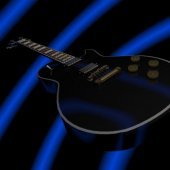Leaderboard
Popular Content
Showing content with the highest reputation on 01/25/2019 in Posts
-
Spent some time with Mike Balzarini (great guy!) at the Cakewalk section of the BandLab booth (Noel was out walking around at the time). Walked away from this experience feeling really confident that Cakewalk is here to stay long-term. And while the Cakewalk section was moderate, it was given a key location, right out front at the BandLab booth. And it was staffed! The overall BandLab booth was first rate. Large. High profile location. And with quite an impressive array of components. Best Cakewalk presence since...well...pre-Roland Era!4 points
-
2 points
-
This is a known issue with the last two updates of Melodyne. Basically what is happening is that Melodyne is "forgetting" its default detection algorithm, and hangs Cakewalk. The workaround is to create a Region FX first, and if necessary, re-select the appropriate algorithm. But once the Region FX is there, you can drag your audio on to a MIDI track.2 points
-
I'm going with Melda. I can slap em on every machine in the house, lifetime updates. They also seem to be pretty stable.2 points
-
Isn't it what ProChannel is all about? I chose Sonar for this functionality. Obviously CLA plugins sounds somewhat different, but I prefer the workflow of the ProChannel. It's so genius! BTW, did anyone notice that Chris is talking to me?2 points
-
Boston Flowers 90's Cakewalk spirit::. [version 2021.12] Give it a chance! Click to DOWNLOAD::. Give it a chance! Click to DOWNLOAD::. [Also, don't miss Deep in Lab theme]1 point
-
Yesterday I was looking at ways to calm the harshness of the pizeo pickup on my DI's acoustic guitar. I'd seen IR's for reverb and cabinets, but I was wondering if anyone had done them for the actual guitar body. Turns out 3Sigma Audio has: https://www.3sigmaaudio.com/acoustic-impulses/ So what these claim to do is take my harsh DI'd acoustic guitar and make them sound as if it came out of an expensive guitar body, mic'd with an expensive mic. Whilst it didn't make my guitar sound exactly like a Martin, it did give it that mic'd sound and took away the piezo harshness. Overloud TH3 (bundled with CbB) comes with an IR Cabinet effect, so this is what I did to get the sound I wanted: Note: These IR's are QUIET, so you'll have to crank the output considerably. Before: http://msmcleod.co.uk/cakewalk/piezo_guitar_DI_with_IR_before.wav After: http://msmcleod.co.uk/cakewalk/piezo_guitar_DI_with_IR_after.wav1 point
-
Looks like Eventide updated their VSTs on 9/28 Change log: 3.4.1 Updated installer to automatically place plugins in the correct filesystem location, without prompting (where applicable). Individual download links: 2016 Stereo Room https://www.eventideaudio.com/support/downloads/2016-stereo-room-native-windows-2 https://www.eventideaudio.com/support/downloads/2016-stereo-room-installer-mac Blackhole https://www.eventideaudio.com/support/downloads/blackhole-native-windows https://www.eventideaudio.com/support/downloads/blackhole-installer-mac H3000 Band Delays https://www.eventideaudio.com/support/downloads/h3000-band-delays-windows https://www.eventideaudio.com/support/downloads/h3000-band-delays-mac H3000 Factory https://www.eventideaudio.com/support/downloads/h3000-factory-windows https://www.eventideaudio.com/support/downloads/h3000-factory-mac H910 https://www.eventideaudio.com/support/downloads/h910-windows https://www.eventideaudio.com/support/downloads/h910-mac Octavox https://www.eventideaudio.com/support/downloads/octavox-native-windows https://www.eventideaudio.com/support/downloads/octavox-installer-mac Physion Installer https://www.eventideaudio.com/support/downloads/physion-installer-windows https://www.eventideaudio.com/support/downloads/physion-installer-mac Quadravox https://www.eventideaudio.com/support/downloads/quadravox-windows https://www.eventideaudio.com/support/downloads/quadravox-mac SP2016 Reverb (Win & Mac) https://www.eventideaudio.com/support/product/12013/installers TVerb https://www.eventideaudio.com/support/downloads/2016-stereo-room-installer-windows https://www.eventideaudio.com/support/downloads/2016-stereo-room-installer-mac Ultrachannel https://www.eventideaudio.com/support/downloads/ultrachannel-installer-windows https://www.eventideaudio.com/support/downloads/ultrachannel-installer-mac UltraTap https://www.eventideaudio.com/support/downloads/ultratap-installer-windows https://www.eventideaudio.com/support/downloads/ultratap-installer-mac or All downloads: https://www.eventideaudio.com/support/downloads1 point
-
We are excited to announce another significant update of our flagship software synthesizer Omnisphere®. Version 2.6 adds an enhanced Arpeggiator and dramatically expanded Hardware Synth Integration, with support for over 60 Hardware Synths! This update adds brand new profiles for such iconic synths as the Roland Juno-106, Alesis Andromeda and the Roland D-50, to the very latest synths like the Korg Minilogue XD and Moog One - as well as dozens of other user requested models. The FREE update will also include hundreds of inspiring new patches for all registered Omnisphere 2 users and will be available in March. Major Arpeggiator Update Omnisphere’s renowned Arpeggiator has been greatly enhanced with all new creative tools, a brand new preset library and much more. The musical possibilities are vastly expanded, making it one of the most flexible arpeggiators ever, while still being fun to use. Best of all, Omnisphere 2.6 can now capture the MIDI data of what the arpeggiator is doing as a standard MIDI file, which can be dragged to any DAW for further editing! Expanded Hardware Synth Integration Omnisphere’s unique Hardware Synth Integration feature bridges the physical experience gap between software and hardware, giving users intuitive control of Omnisphere by using the familiar layout of their hardware synth. With the new 2.6 release, many requested hardware synth profiles have been added, including support for over 60 popular hardware synthesizers from Moog®, Sequential®, Roland®, Korg®, Novation®, Nord®, Behringer®, Access®, Studiologic® and Yamaha®. The supported hardware synths cover a wide array of form factors and price ranges for different types of users. New Sounds Omnisphere 2.6 features a newly expanded “Hardware Library” with hundreds of new patches created by Eric Persing and our renowned Sound Development team. Notably, this update takes Eric’s classic sound design work from the original 1987 Roland D-50 into completely new sonic territory with Omnisphere’s vast synthesis capabilities. New Hardware Synth Profiles added in v2.6 include: • Roland Juno-106 • Roland D-50/PG-1000 • Alesis Andromeda A6 • Behringer Deepmind • Access Virus Indigo 1 • Access Virus Indigo 2 • Access Virus C • Access Virus TI • DSI/Sequential Pro 2 • DSI/Sequential Prophet 08 • DSI/Sequential Mopho • Roland JP-8000 • Roland JP-8080 • Roland Gaia • Roland JD-Xi • Roland SH-201 • Nord Wave • Nord Lead 3 • Nord Lead 4 • Nord Lead A1 • Nord Stage 3 • Moog One • Moog Minitaur • Korg MicroKorg • Korg MicroKorg XL • Korg Minilogue XD • Korg MS-20i • Korg MS-2000 • Novation MiniNova • Yamaha Reface CS *complete list of new features and supported synths will be announced upon the official release in March 2019. Pricing and Availability Omnisphere 2.6 is a FREE update to all registered Omnisphere 2 users! Official Release March 2019 All specifications subject to change without notice. All trademarks are the property of their respective holders1 point
-
1 point
-
Thanks Matthew. I had tried that one earlier but it didn't work. Does now. No hope for the 'Slider Background' tho. If only they'd replace the nonfunctioning entries (all the gray CV backgrounds became defunct when colored tracks were reintroduced) with the missing entries, we'd be good. EDIT- Didn't work because it requires a reboot (close/reopen) of CbB to take affect.1 point
-
1 point
-
I usually just bounce down a whole mix minus what I'm about to record and then "archive" the folders of tracks that use the most CPU. R1 point
-
I miss the 80s too ... I was 30 plus years younger for a start.1 point
-
There is no install button once CbB is installed. There is an update button. The update process was changed slightly starting with CbB 2018.11. Now BA will download one of two files depending on the version of CbB installed. If running the most recent version, BA downloads a CbB update file. This is a much smaller file than the full CbB installer containing only the parts updated since the last release. This file will only work with the previous production release. If this is the initial install or updating from an older release of CbB, BA downloads the full CbB installer. Either way, updates do not stop for user input so one must be quick when making a copy of the CbB installer in %appdata%\bandlab-assistant\Downloads (although I just noticed Cakewalk_by_BandLab_Setup_25.01.0.27.exe and my copy are in the download folder days after the update).1 point
-
I actually prefer the older version of Nectar Elements. It's a pity they discontinued it for a while before releasing the new Nectar Elements - there's no upgrade path between them. The newer Nectar Elements does has a wizard and automatically guesses what your vocals need, which I guess is great for quick results, but it looks like there's much less control than with the original elements.1 point
-
1 point
-
1 point
-
1 point
-
A bus has no data to freeze but it may be bounced. Bounce everything possible through a bus or two to create a submix and archive the bounced tracks/buses after bounce. Aside from quick groups and control groups, folders are a quick way to archive a group of tracks. As far as a CPU conservation option there is this.1 point
-
1 point
-
That's easy! Just insert this plugin across all tracks you want to mix with it. Then assign each track to a subgroup, e.g., Kick and Snare to Drums group (Chris like to call them buckets), guitar tracks to Guitar group or buckets, etc. Then you'll be able to open any instance of the plugin and mix from there the way Chris does with his console.1 point
-
My list does not include multi-cpu checks. I have racks of servers, but they are not used for audio 😉1 point
-
If you're not into social media you can still get this by selecting Tweet and inputting garbage ID and password info. Tweet will fail but the Hornet download will then continue.1 point
-
All of your methods of reducing CPU that you've mentioned above are good ones, and are the ones I'd recommend. One other, which is pretty quick would be to increase your ASIO buffer. This would be less suitable for tracking however. For tracking, freezing tracks would be my first option.1 point
-
1 point
-
While many things can be tweaked so Sonar/CbB can run fine, expecting it can work as most performance optimized DAW to the date (I mean REAPER) is hopeless. One responsible for fluent operations with small buffers feature, the anticipative processing, simply does not exist in the Cakewalk engine. But it should be possible to make CbB working. With bigger buffer size and less plug-ins, but still. When I think I have troubles, I normally start with my personal list: http://www.azslow.com/index.php?topic=395.01 point
-
What happened is that while BandLab does support Cakewalk, apparently "support@cakewalk.com" is a broken email address and therefore not a good way to contact them. Looks like the way to get help from the company is via https://help.cakewalk.com/hc/en-us/requests/new instead of support@cakewalk.com Support@cakewalk.com is referred to several times on BandLab-owned websites as being a valid way to contact support for Cakewalk, so they should either get rid of that or make it a valid means of contact.1 point
-
Too friggin drunk to read all the hard core advice here, so sorry if this is already covered. My opinion lay below layman, so may not be worth a hill of compost in the bigger, more informed picture. Maybe depends on what the target of the end product is. If you are translating to another system with thousand dollar monitors that need every nuance of a 192/24 or floating 32bit representation, then you got to go with the big guns. Some claim that 24 bit depth can record trails of faint reverbs or the like that merit the argument to record at higher bit rates.. Reference the depth of the noise floor. Twice, three or way more better than what the ancient rock and roll masters had struggling with an Ampex tape machine. 56 db s/n ratio was all they had, but they did magic. If the target is a CD boombox, you are stuck with the 44.1k/16 bit protocol. Everything you have oversampled is lost. Noise floor comes up to 16 bit obscuring the silent subtleties. All connect the dots points on the digital timeline are thrown out down sampling to 44.1 k. Anything oversampled to get pristine quality has to be degraded to make the CD. Anything undersampled has to be bloated up to an empty space with no added data. This why in my ignorance, since my target is eventually a CD, record at 44.1k and 16 bit depth, just do it the way it ultimately has to be restructured to make the CD and not having to worry about artifacts in the conversion. Something I found. My old PCI Delta 1010-LT allows recording at 22.5 k or whatever close. Gets beyond a curse of pristine digital unforgiveness and seems to throw in a bit of old analog goodness. My opinion, if you are going to publish a CD, do 44.1 k and 16 bit depth. All else upper and lower is lost until they update the CD standard, and you are at the mercy of the integrity of whatever you have chosen to up sample or downsample your final mix. My two cents. John1 point
-
Going to need to install the Platinum core (The top level SONAR Platinum link in the Command Center) to be able to install all the Platinum plug-ins. Unlike X3 and older, there is no advanced install option for Platinum. There are several installers though. To save about 50% of the space used by Platinum (excepting the samples for DP and Rapture Session) skip the tutorial install. Can also skip the SONAR Theme editor; CbB has its own. Include the local documentation if you want a relatively recent pdf and chm file. There is a hack to add the old SONAR chm to CbB but there will be missing pages. All the other legacy plug-ins from X3 and older may be installed with actually installing the DAW EXCEPT V-Vocal. To get V-Vocal requires a minimal installation of the DAW. Here is what that option looks like in X2 Producer The legacy LP plug-ins were dropped from Platinum when the L-Phase plug-ins were added. The easiest way to get these back is an advanced install from X3 or older. It is good idea when installing the actual DAW (in this example X2, Platinum and CbB) they be installed oldest first. While the installers are pretty smart about not overwriting newer files it can happen with unexpected results. Installing in order prevents lost updates. When running SONAR installers advanced option for plug-ins only, order does not matter. In fact, these installs may be deferred until a project is encountered with missing plug-ins.1 point
-
From what I can gather from the video it works like this: You put one instance on every track, this "registers" this track with the plugin You then go to the assign tab (from any instance of the plugin), which lists the registered tracks. You then assign the registered tracks to buckets So the display CLA has of 4 instances showing each tab, is 4 separate instances (from any 4 random tracks) with the appropriate tab and bucket selected. So in essence, you can control all tracks from any instance.1 point
-
One game changer for me was tweaking the ( mix thread count ). I'm using an Appollo interface and I presumed that using all cores was the most efficient way to process. But I had to reduced the number of cores to 6 before all was well. I presumed that maybe the Appllo required core for it's internal processing. I don't really know but - I luckily found a very old thread on the forum that eluded to this and sure enough that was the key. I don't know enough about how this all works - but you might try to see if it helps. Hopefully it couldn't hurt.1 point
-
But - you are a heck of a great resource to this forum. In case you couldn't read my mind.1 point
-
1 point
-
Shameless self-promotion allowed? I've mastered quite a few records now and been using Sonar for MANY years! Done many different styles, from acoustic stuff to full on electronica. Here's the first tune off my second album: https://www.youtube.com/watch?v=aHsvRHde7Ys Let me know if I can be of service! ricobelled@gmail.com www.RicoBelled.com1 point
-
1 point
-
I already asked for that in another post a while back " Nested Folders "1 point
-
As I understand it, whether or not to check "UseMMCSS" depends on your audio interface. The documentation for my Antelope Orion 32+ suggests turning it off in the DAW as it is being handled by the Antelope driver. I had better performance after turning it off in CbB. However I don't think that is the OP issue. Crackling audio is usually is caused by too small of a buffer. Many people have reported being able to use smaller buffers with Reaper. I have auditioned Reaper and while I like the program well enough, I did not find it to perform any better than CbB. However Cakewalk works very well on my system, so YMMV. As far as this goes... You should probably start a new thread. Deleting those two .ini files is not something you should have to do repeatedly. More info will be needed.1 point
-
There are a few things about the AUD.INI. None of which appear to big performance issues but each machine is different. The project and picture cache are on the system drive. Given the machine has multiple drives, it may be better to put these elsewhere. This may already be done with directory junctions. Can't tell from AUD.INI entries. If possible put the picture cache on a non-system drive that does not contain project audio. I use a regular HD for my project audio and needed a little larger DiskBufSize. I double the default to 512. UseMMCSS is set to 0. The default is 1 and the help advises to leave it at 1. Sometimes the help is not accurate but it may be worth testing the default value. FileBitDepth is set to 16. This is not a performance issue but most would recommend projects record bit depth of at least 24. ExtraPluginBufs is set to 0. With 32GB of RAM it can't hurt to give a little extra memory to plug-ins. I changed this to 32. DropoutMsec is set to 250. I increased this on my PC to 750. With the exception of UseMMCSS and FileBitDepth, I cannot recommend my values for any machine but my own. These just stand out as differences from my config.1 point
-
I would much rather Bandlab allocate their resources to any of a hundred other things first.1 point
-
CbB will use all the CPUs made available by the OS. One the thing I noticed about the Xeon E5420 is its slow clock speed. This could be an issue. That said, WRT to CbB settings, in preferences: EnableSetThreadIdealProcessor should be True ThreadSchedulingModel should be set to 2 You may try tweaking MixThreadCount. By default, it is set to 0 which makes all cores available to CbB. Sometimes, it is preferable to reserve 1 or 2 for the OS and other tasks.1 point
-
I'm an anti-quantizing person for most forms of music (some electronic dance music and disco songs need it). I believe that along with auto-tune, they are tools better to be left alone. IMHO quantizing takes the soul out of the music. It takes the breath out of it. It makes it sterile. The rhythm section needs to groove. Sometimes the 2s and 4s need to be a hair ahead of the beat, some times behind. Same for eighth notes. Big triplets need to be dragged in most cases. Melodies often drag part of a phrase and then rush to catch up or vice versa. Sometimes a certain beat of a song needs to be rushed or dragged for emphasis. In many Latin American forms of music the congas need to be played laid back behind the beat. Sometimes in jazz the ride cymbals need to be a hair pushed. And this is only the tip of the iceberg. I've played professionally since the 1960s in a variety of genres and venues. When I started sequencing MIDI back in the Atari/DOS/MotorolaMac days I tried quantizing and hated the sound. Where's the groove? Where's the soul? Where's the vox humana? I realized I had to play the parts in live, in real time, and use the feel that I'm used to by playing with some of the finest musicians I've ever heard. Of course there are many exceptions. And although you can generalize about certain things like 2&4s being laid back in the blues, the reality is no two songs are alike. If you know the song well, play it like you feel it. One more thing, as I mentioned earlier, some "dance" forms of music and/or individual songs from the disco era on need to be quantized as that is their sound. Of course, there is more than one right way to make music. My way may not be best for you. Insights and incites by Notes1 point
-
1 point
-
The forum was rest to 40 posts per page. https://discuss.cakewalk.com/index.php?/topic/54-how-do-i-provide-feedback-about-this-community-itself/&do=findComment&comment=67001 point
-
1 point
-
1 point
-
Hot cocoa sounds like it will be in order. The tail end of that big northeastern blizzard will make it down here and Sunday is supposed to be the coldest night of the year. It normally goes into the upper 60s or 70s here at night, but Sunday night they are predicting 50s or 40s and then a warming back to normal. I know that doesn't sound cold to people who live in the north, but it's 80 right now, and that's a big dip in temperature. I've seen a number of full lunar eclipses, and I never get tired of them. So if I don't return, send out the Saint Bernard dogs with a full keg of brandy !!! Notes1 point
-
1 point
-
Yes, ALT+click on the bus number will select the tracks sending to it. Sends have a pre/post fader switch. The output is post fader. Functionally a post fader send is the same as routing the output to a bus. Pre-fader sends are useful for sidechains. Sending tracks to another track using a patch point or an aux track can serve the same function as a bus except the it is located in the track area. Some like to see "buses" next to the tracks. Some prefer the have buses in the bus area.1 point
-
I believe if you 'alt-click' on a bus to select it it will select the tracks and other buses that are routed to it. It may be 'ctrl-click' but it is one of those. If you send to a bus then that takes a copy of the signal and sends it to the bus. You could still have the output of the track going to a different bus. This allows you to send some of the tracks signal into say, a reverb bus. Then each track to which you want to apply that reverb can have a send to that bus with its own individual level of reverb.1 point



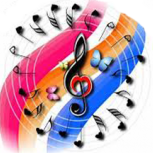
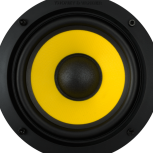
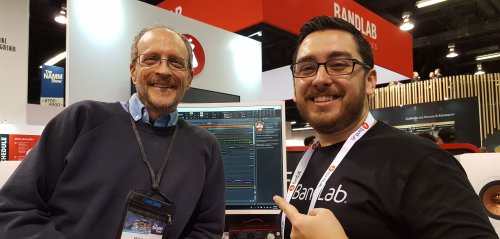
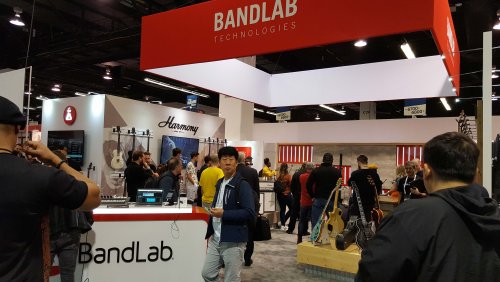
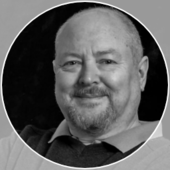





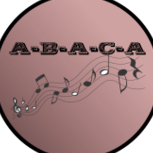
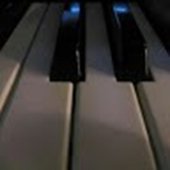





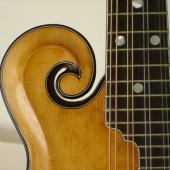
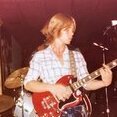




.thumb.jpg.ee8fd6efe0a58cb14f108898c279bdb6.jpg)

